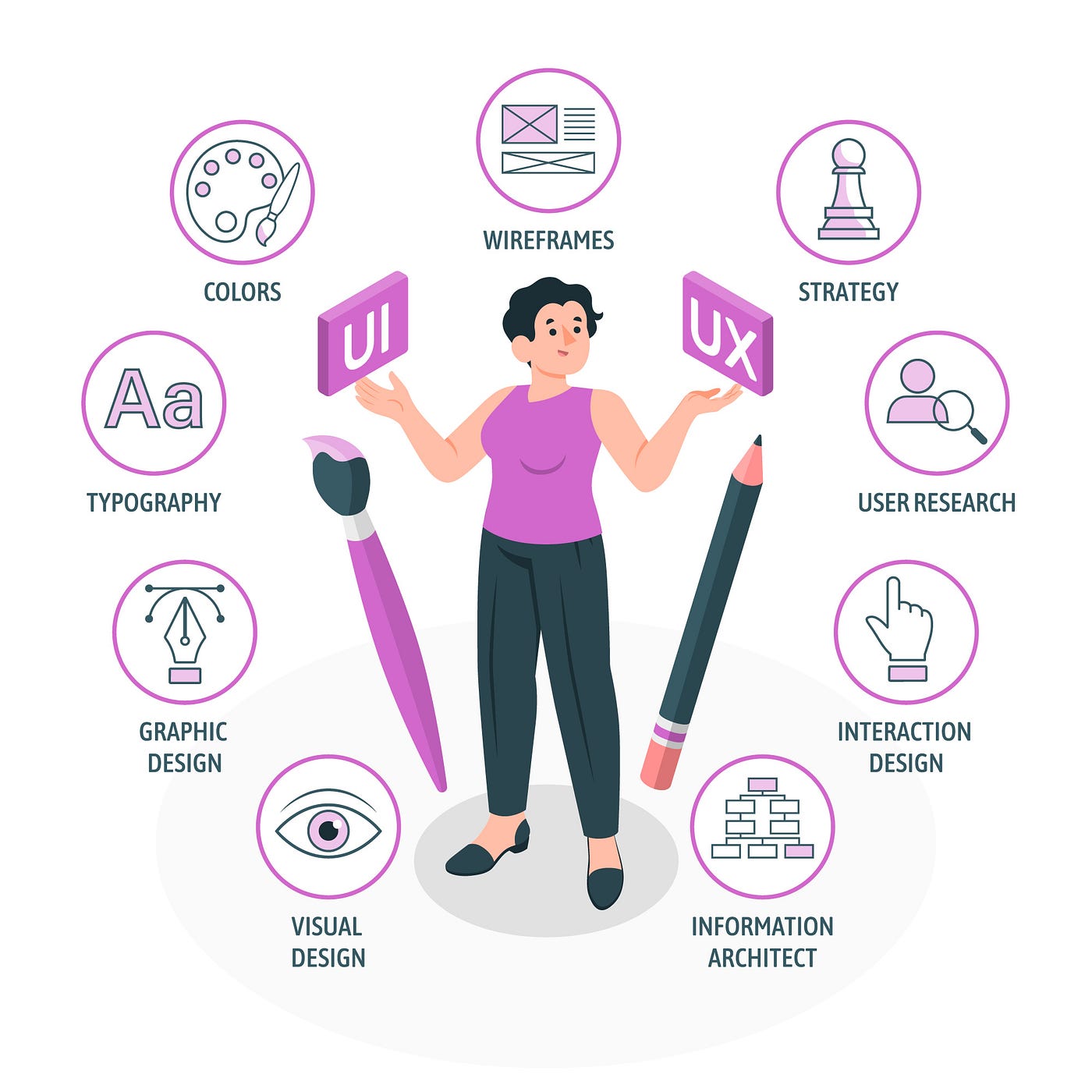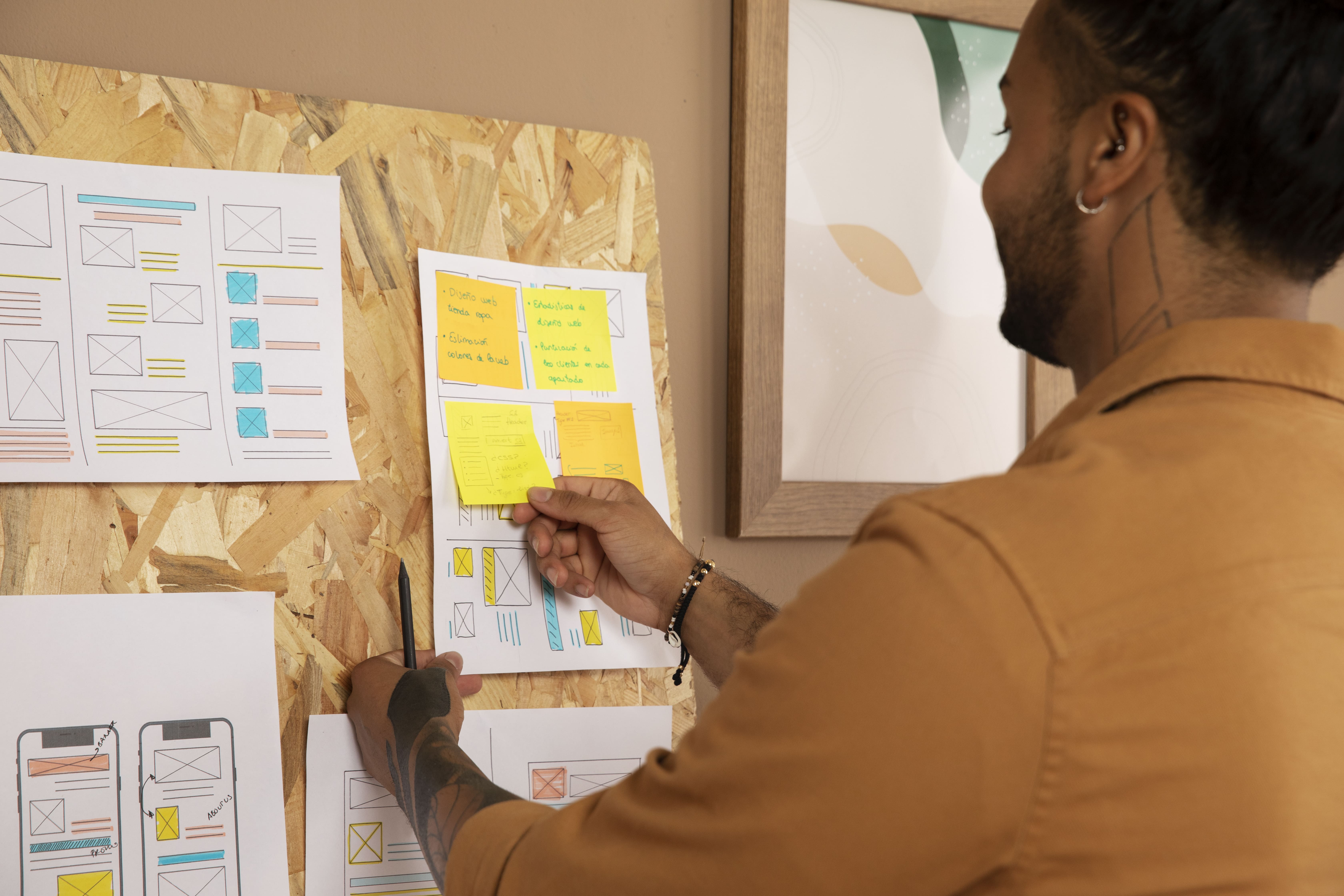Thank you! Your submission has been received

Start typing here.Embarking on a journey in the world of design goes beyond mastering the intricacies of design tools or the principles of aesthetics. I have observed that the person or personality of the designer has a lot to contribute in this regard.
Having interacted with a lot of UX designers, I have come to understand that what makes some people stand out is not just because of how good they are as a designer, but more into their personality, some traits, disciplines, strength and weaknesses and how they leverage them. Of course, this article can’t exhaust them entirely, but my aim is to shed light on the often-overlooked aspects that play a pivotal role in shaping a designer’s career.
The thought is simple, I call it The “You” in UX — Understanding yourself and leveraging your strength and personality in being a great designer.
Anyone who has been learning or practising as a UX designer will be very familiar with the term “User”. This term is so important that everything around UI/UX or Product Design revolves around it, and rightly so. It is almost often over flogged. The user must do this, do that and it seems to be an intelligent way to approach anything — “the user”.
However, I think this has been so emphasised that many UX designers don’t pay attention to themselves and how they can help the user achieve what they want to achieve. So, I dare say, before considering the User, consider yourself. Consider the “You” in UX. That is, the role you have to play in shaping the user’s experience. So the call is simple. Dear Designer, understand yourself!
When I say “Understand yourself” this is not necessarily a call for an exhaustive soul-searching expedition but a subtle introspection into the unique blend of strengths and weaknesses that make up your personality, and how it affects your design career.

I have observed that Designers, in their diverse roles, often find themselves leaning towards specific areas of strength in their craft, be it visual design, meticulous processes, research geek, impulsive creation, or ideation. However, this natural inclination, even though comfortable, may not always lead to the maximisation of their full potential. As UX designers, a wholesome approach demands embracing and excelling in various aspects, even those outside one’s comfort zone.
For example; there are those that have a strong affinity to visual design and how things look; and many times they get bored with the processes of design or product thinking and UX analysis. They may eventually find their way around it, but it won’t be something they exactly find easy or enjoy. In becoming a wholesome designer though, it is something they have to embrace and pay attention to those aspects.
Similarly, there are those that have a strength in detailed processes. These kinds of people will envision every step of the user and even misteps and try to make provision for it. However, they may not be strong in UI or visual design; and this can totally affect how their work is perceived even though the processes are well thought out.
There are also those ones that are quite impulsive and spontaneous. These kinds of people have a knack for churning out features fast, which can influence greatly how they work or are perceived. However, because of their impulsiveness, they may be too excited about an idea that they don’t think it through fully before springing into action, only to realise the flaw in them and begin again.
Another category are those who are crazy executors. They find it easy to interpret ideas into design, and that quickly. This is a great skill which can set any designer apart. However, some people like these might be lazy thinkers or have not developed that faculty so well in them.
Conversely there are folks who are great thinkers or who we call the “idea guys”. They have a strength in coming up with new ideas and features and alterations here and there. They live and breathe product ideation. While this is also a very important skill, there could be a blind side to it such that they gain mental satisfaction with the ingenuity of the ideas and implementation becomes weak/slow.
Wherever the divide you fall, or if you have a combination of some, the focus of this article is to take time to understand yourself and your strengths and begin to find ways to leverage them and take deliberate steps in being better.
Self-awareness can guide you in identifying which skills you need to develop further. By understanding your areas of improvement, you can focus on learning and enhancing the skills that are most relevant to your growth as a UX designer.
There are other scenarios I will still explore later, but whether you identify with one specific category or find yourself straddling a combination, the focal point of this article is to encourage a profound understanding of oneself. By deciphering your strengths, weaknesses, and unique blend of skills, you can embark on deliberate steps toward personal and professional growth.

